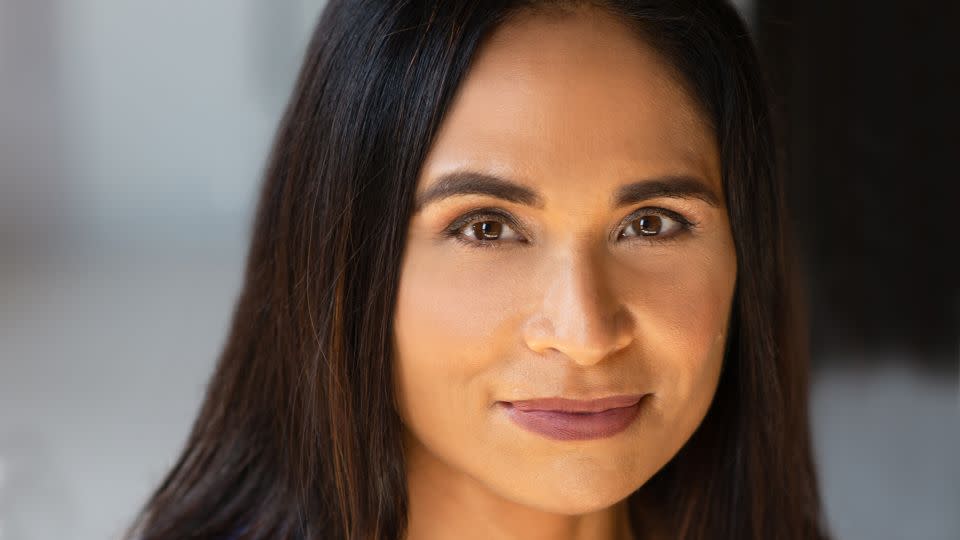Opinion: If WNBA owners are smart, they’ll start investing in their players
Editor’s Note: Theresa Runstedtler is author of “Black Ball: Kareem Abdul-Jabbar, Spencer Haywood, and the Generation that Saved the Soul of the NBA.” The views expressed in this piece are her own. View more opinion on CNN.
Various memes pointing to the massive pay disparity between the top 2024 WNBA draft pick, rookie Caitlin Clark, and the top 2023 NBA draft pick and rookie of the year, Victor Wembanyama, have been making the rounds. Some point to the gulf between their four-year rookie contracts — $338,000 and $55 million, respectively — while others note the difference in their first-year salaries — $76, 535 and $12.2 million, respectively. Even adjusting for the WNBA’s shorter season and much smaller revenue than the NBA, the difference is exponential.

So widespread has the media outrage been that folks who normally turn their noses up at professional sports (some of my academic colleagues, for example) now have their noses out of joint about this glaring example of the enduring gender pay gap. Even President Joe Biden took a moment to tweet about women in sports not being paid their fair share. But the truth is that this sports wage disparity is neither new nor unique to professional basketball. So why are we suddenly paying attention to it?
After all, low pay has long necessitated that North America’s best women ballplayers go abroad to Europe, Asia and Australia to supplement (or in some cases supersede) their WNBA incomes. Even during the early years of the WNBA in the late 1990s and early 2000s — the days of Sheryl Swoopes and Lisa Leslie — players went abroad. Overseas leagues have long recognized the value of signing WNBA stars to not only raise the level of play, but also attract more fans. The phenomenal Phoenix Mercury center Brittney Griner knows this grind (and its risks) all too well, as she details in her recently-published memoir. However, thanks to the Covid-19 pandemic, economic recessions and political troubles, lucrative opportunities abroad are dwindling.
Could it be that it took a cisgender, straight White woman being the NCAA’s standout star to get more people to pay attention to the basketball wage gap? Would we be furiously sending around the same memes if South Carolina’s Kamilla Cardoso (third pick) or Tennessee’s Rickea Jackson (fourth pick) had been the WNBA’s top draft pick? If the amount of venom and general misogynoir directed at Louisiana State University’s Angel Reese (seventh pick) about her name, image and likeness earnings is any indication, the answer is probably not. Despite the fact that Caitlin Clark pulled in an estimated $3.4 million, nearly twice Reese’s estimated $1.8 million, Reese’s detractors have offensively called her classless and even thuggish.
We shouldn’t forget that it wasn’t that long ago that men in the NBA were underpaid and without labor protections and pensions. Today, the National Basketball Players Association (NBPA), the union for NBA players, is in a much stronger bargaining position thanks in large part to the Black-led player efforts of the late 1960s and 1970s that changed how the NBA did business, from overturning the four-year rule, which required that players be four years beyond their high school graduation to be eligible for the draft, to ending the reserve system and establishing free agency, to pushing for a share of league revenues.
Ironically, White team owners and sportswriters used to argue rather vehemently against larger contracts for NBA players in the 1970s. Facing rising labor activism, teams claimed that they were going bankrupt because of rising player salaries — that revenues were not large enough to pay players a market rate. And they worried that the league’s still largely White fanbase would not support the increasingly Black-dominated NBA.
By the late 1970s, this narrative of decline had become a kind of self-fulfilling prophecy. The league’s broadcaster CBS regularly played important playoff games, even the NBA finals, on tape-delay. As then-Commissioner David Stern once told The New York Times, “Our problem was that sponsors were flocking out of the NBA because it was perceived as a bunch of high-salaried, drug-sniffing black guys.” Rather than shying away from the Blackness of the NBA, Stern leaned in and had figured out how to sell the sport to a much wider audience by the mid-1980s.
In recent years, ratings and ticket sales for women’s college basketball have challenged the old adage that the women’s game isn’t as popular with viewers. For the 2023-2024 season, NCAA women’s ball saw a 60% increase in television ratings across major networks. And this year, the Big Ten Women’s Basketball Tournament was completely sold out for the first time in its history, while the women’s NCAA championship game drew a larger television audience than the men’s title game.
Given what I know about the history of the NBA, I am a firm believer that if the same investment and strategizing begins to go into the women’s game, it will also garner more market share. If you build it, the fans will come. If the owners are smart, they will make that investment in the game and their players.
For more CNN news and newsletters create an account at CNN.com


